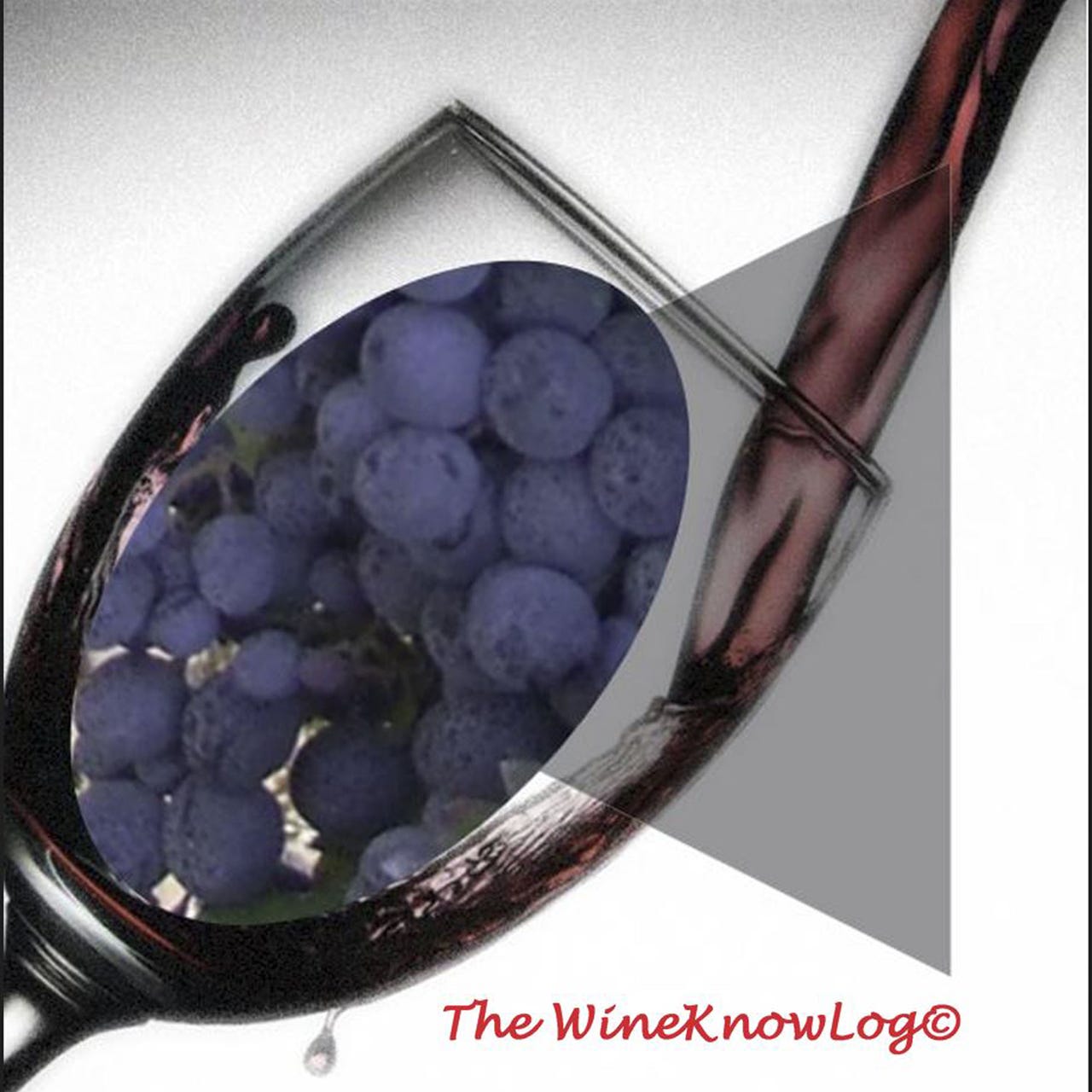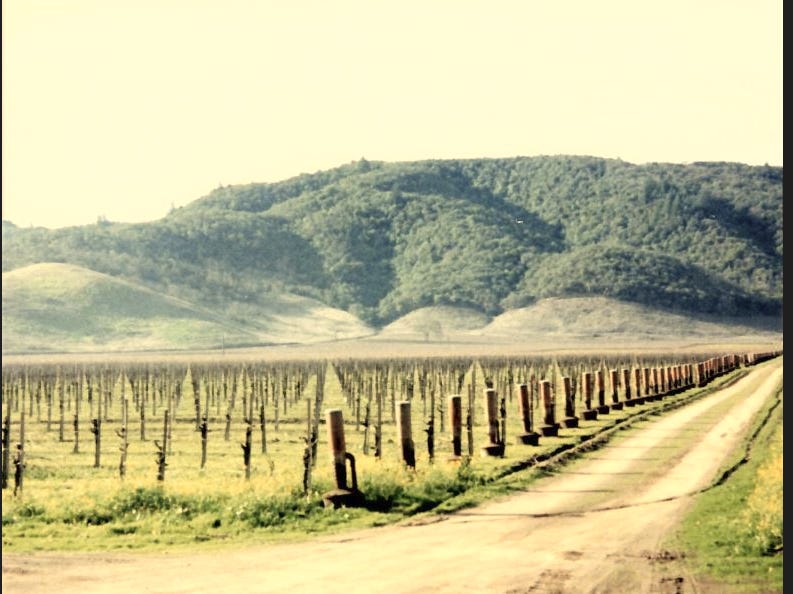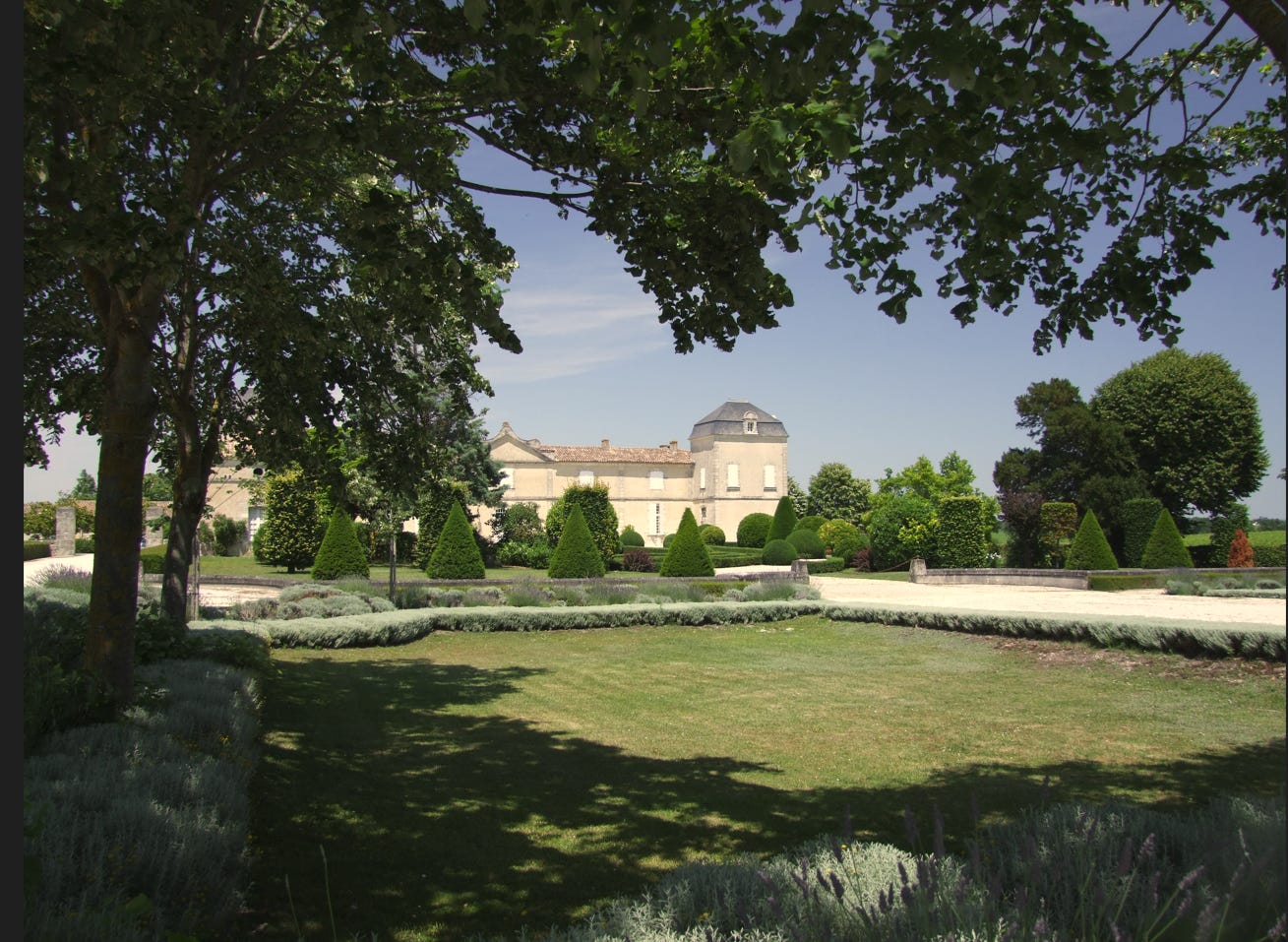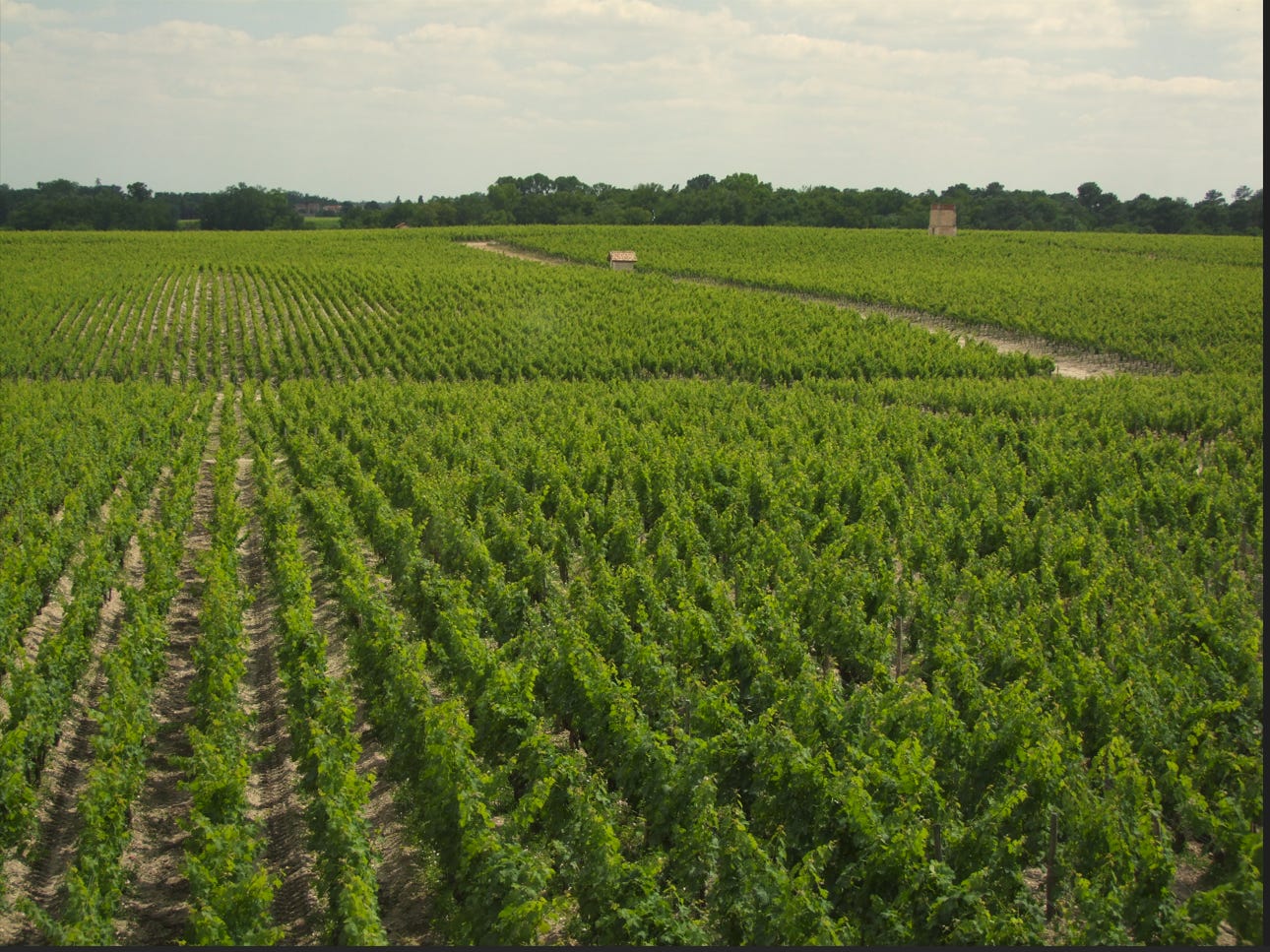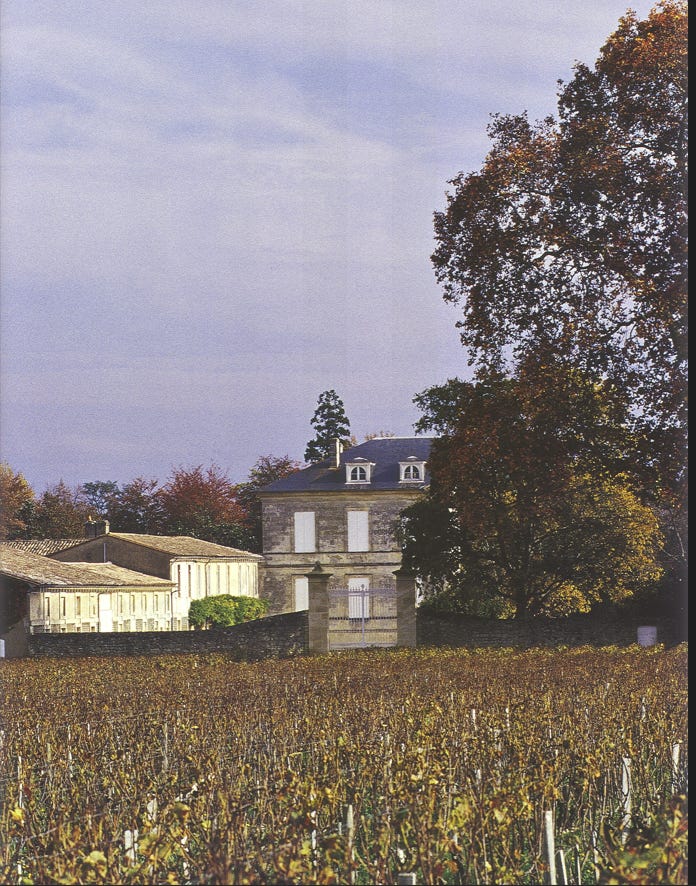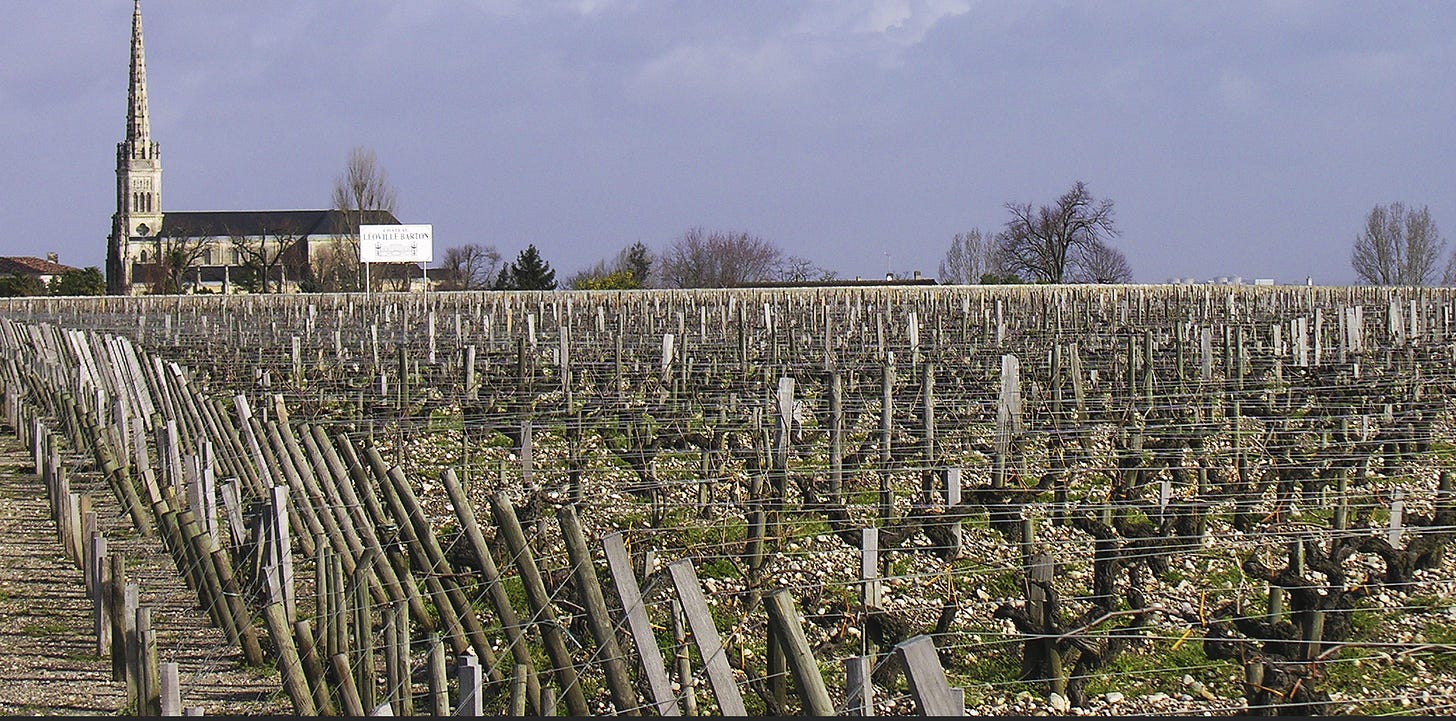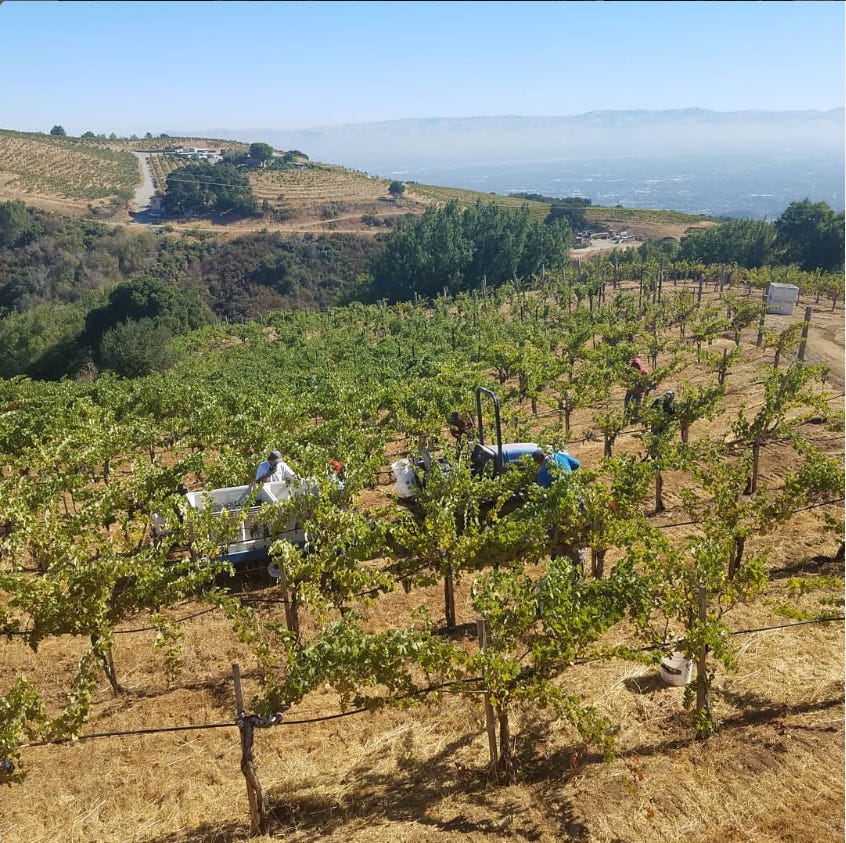Cabernet-thon lineup (l to r in tasting order by pairs) with ‘Taste-Master’ Laura de Pasquale MS in background (JBMW)
Earlier this week, I was invited to attend a tasting of Cabernet-based wines from some of the more prestigious producers from California (principally Napa Valley) and Bordeaux (principally the Médoc), hosted by one of the larger importers of the latter in the US. Excepting one Merlot-based wine, all of the others featured Cabernet Sauvignon as the lead actor. The Fun part- the host of this tasting asked us to taste the wines ‘blind’; six pairs of wine (and one bonus wine afterwards), which were thematically organized. There was method to her madness!
Now, if this had just been a blind tasting of 12 wines randomly organized, well, that’s nice, but it would have been just another tasting to decide which wine(s) one prefers the most, and leads to ranking the wines, using some point scoring system. That is, a beauty-pageant tasting! Granted, this was a fine group of wines, yet by organizing the tasting as pairs, each with a theme to be discovered or di-vined (sic!), even folks like myself with a lot of tasting experience and familiarity with both Bordeaux and California Cabernet blends might gain new perspectives.
These included more insight about how wines from these two quite different locales differ in style, and how to tell them apart (not so easy these days given global warming). But equally important, it clarified why one should evaluate the quality of each wine within the same framework of reference (balance, intensity etc.), while also recognizing that each region’s quality/character hinges on different observational fulcrums. For example, Mid-palate, darker fruit concentration contrasting with higher alcohol warmth for California; Focused, more linear fine-grained tannins framing berried fruit and savory intensity for the Bordeaux wines.
Another purpose of this tasting was, perhaps unfairly, to compare and contrast these prestige wines based upon price/quality rapport. All of these wines were expensive ($130-375), as befits the prestige of the variety in each region, and how expensive the vineyards are, the high cost of producing wines based upon micro-managed attention to detail, the extensive use of new French oak barrels for aging, and of course, their historical classification and recent reputation. Evaluating wines like these blind, not knowing their names also asks the question, are these wines really worth the price?
For most of us, these wines are unavailable-too costly with limited availability. On the other hand, evaluating them without bias helps any interested wine drinker understand just what top wine producers consider important to maintaining their style, and to consumers providing a consistent identifiable sense of place, character and quality within the historical context for each location. Also, if you want to define yourself as reasonably wine-literate, it helps to taste wines like these to understand how wine standards of quality, style and personality are determined in today’s wine world.
For wine lovers who (still) value drinking aged wines, or are considering doing so, a tasting like this serves to highlight the difference in style, appeal and quality between the youthful fruit-driven, robust wines most are accustomed to drinking now, and the lovely, if more subtle complexity and sometimes harder-to-pin-down nature of the same wines with ten or more years of age.
I know this post will be of academic interest to many readers. Sometimes it is useful, however, to taste, appreciate and understand wines like these since they represent a category of wines considered ‘classic’ or benchmark styles that represent the collective wine world’s framework for wine excellence.
Whether based upon over three centuries of continuous adaptations to the vicissitudes of the maritime temperate climate of Bordeaux, or a little over a century’s experience dealing with the golden warmth of Northern California’s coastal regions, these wines exemplify how well a relative grape newcomer (late 17th Century) has been able to evolve, becoming a global leader and responsible for some of the greatest wines on the planet.
THE WINES TASTED (in order of flight ‘pair’s presented to each taster)
Older Cabernet Block at Dominus Estate, Yountville at the base of the Mayacamas mountains, 1986 (JBMW)
Dominus Estate 1994 Red Wine PAIR #1-1, Yountville 70% Cabernet Sauvignon, 14% Cabernet Franc, 12% Merlot, and 4% Petit Verdot. 1st pair theme: Mature, aged wines/ Maturing garnet ruby, pale rim. Tobacco accented bouquet with hints of 4-EP brett obscuring fruit (band-aid!). Medium body, earthy, sweet cherry cassis underlying scents. Tertiary flavors, with elongated tannins. Fairly elegant, fine cabernet earthy flavors, if shortened finish due to brett, which gets stronger with aeration. Band-aid notes obscures fruit. Not a good bottle, as previous bottles of this wine i have had are really excellent, wonderfully fruited and powerful all at once. Now-2026 14.7% */16 N/A ($500+) at auction
Chateau Calon Ségur, St. Éstephe, with the vineyards behind the chateau in distance reaching down to the Gironde River (JBMW
Chateau Calon Ségur 3rd Growth 1996, #1-2, St Éstephe 65% Cabernet Sauvignon, 7% Cabernet Franc, 25% Merlot and 3% Petit Verdot. Slightly darker core, ruby garnet. Fresher, classic, Cabernet cedary-berry lovely & elegant bouquet. Stylish. Medium body. Fine tobacco, graphite dried berry and floral flavors with fine, integrated tannins beginning to melt into the fruit. No lack of finesse. Balanced, still lively fruit and excellent mineral-graphite finish. From a strong, but sometimes too tannic vintage, this is showing beautifully and at a solid, mature stage. Has grown into itself based upon earlier good reviews-now more impressive. Now-2028 13% **(+)/17+ $298
Chateau Pontet Canet’s Pauillac Vineyard on its gravelly croup next to Mouton Rothschild, Pauillac (JBMW)
Chateau Pontet Canet 5th Growth 2005 , #2-1, Pauillac 70% Cabernet Sauvignon, 25% Merlot, 3% Cabernet Franc, & 2% Petit Verdot. 2nd Pair theme: comparably aged somewhat mature wines/ Fairly dense ruby, with youthful core to rim, translucent. Earthier, cedary CS dominant bouquet. Medium body. Strong dense, firm-structured wine with fairly tannic finish still. Less rich & and more austere youthful vitality on finish. Very mineral, not fruit focused Cabernet. Rather chewy but fine, long and still youthful. Biodynamically grown. 2005 vintage yielded a powerful, concentrated style, perhaps not the most finesse? Definitely has a CA-sense of ripeness, if finer acidity. Now-2031 13.5% **/17 $345
Mayacamas Vineyards—one of a dozen blocks on Mt Veeder overlooking the Napa Valley and out to San Pablo Bay (courtesy /www.mayacamas.com/)
Mayacamas Vineyard 2007 Cabernet Sauvignon #2-2, Mt Veeder Napa 90% Cab Sauv, 9% Cab Franc/Merlot. Aged 18 months in older larger foudre casks, then 12 months used barriques. Classic dense and firm mountain grown wine, traditional winemaking. Medium deep, less dense ruby color to above wine. More cigar box, less floral nose, too, with riper cherry-cassis aromas and a hint of barnyard (brett?) earthiness. Medium plus body, bright fruit, fine firm tannins but softer texture (marginally!) and more flattering finish. Shallower length, with a hint of austerity on finish. More rustic? Definitely mountain style structure! Certainly very good, but less class to Pontet in similar, burlier style. Now-2027 14.5% **-/16.5+-17 $270
April 1991; one of the old merlot blocks at Chateau Canon on the limestone plateau above the city, looking southeast (JBMW)
Chateau Canon, 1er Grand Cru Classé B St Émilion 2010, Pair #3-1 St Émilion Grand Cru 75% Merlot, 25% Cabernet Franc. 3rd pair theme: Same Vintage, if contrasting blend with relatively equivalent classification(?) Medium dark ruby-garnet. Full body, with focused, resonant rich cassis-laden, minty oak bouquet. Suave tannins frame fine mid-palated fruit intensity leading to a long, rich, complex finish. This has complete, still youthful flavors and good cedary-graphite accents, courtesy of the significant amount of Cab Franc. I thought this could be California, but showed some 'claret-y' aromas, so then realized it as Bordeaux. Ripe, nicely mature, if not all cabernet-like with hint of Merlot plum-sour cherry elements. Somewhat earthy finish and strong gamy, mineral stoniness. Vineyard primarily on the limestone-clay plateau next to St Émilion town. Fine depth, very long and beautiful wine, still needs a decade (Someone rated this 100 pts back in the day)- Best wine on the table, perhaps surprisingly, but so refined and balanced. Same ownership as 2nd Growth Rauzan-Segla in Margaux. Fine winemaking. Now-2040 13.5% ***/18 $240
Chateau D’Armailhac, Pauillac, ca. 2000, with its vineyard situated not far from big-brother stablemate Mouton Rothschild.
Chateau D'Armailhac 5th Growth 2010, #3-2, Pauillac 60% Cabernet Sauvignon, 23% Merlot, 15% Cabernet Franc & 2% Petit Verdot. Slight deeper ruby to above, with violet at core fading to rim-very cabernet hue! Somewhat tougher tannins than Canon, with more austere, youthful, almost mountain-style structure and fruit. Lacks the finesse and evolved complexity of the Canon, nor has the much finer elegance of the 1996 Calon Segur. Solid wine, very Pauillac cassis-berry, almost licorice-like bouquet indicative of Cabernet there. Part of the Mouton-Rothschild stable. Needs time, but more evolved for this vintage than other wines. Now-2030 13.5% **-/16+ $135
Chateau Leoville Barton: one of the old Cabernet Sauvignon blocks (40+ years) and billboard sign in front of the St. Julien Church on its highly gravelly terrace, 2007 (JBMW)
Chateau Leoville Barton 2nd Growth 2015, #4-1, St. Julien 86% Cabernet Sauvignon, 14% Merlot. 4th Pair Theme: Comparably aged, organically produced Cabernet dominant wines. Medium ruby violet color. Dark cassis-berry bouquet with some gamy, savory-cedary accents. Very typical young Cab Sauv aromatics of St Julien/Pauillac—the definition of ''Cabernet" for many—as the vineyard lies on one of the finest, deeper gravelly terraces in the Medoc. (Gravel= graphite, violet-cedar aromas and fine if firm tannins for me) Medium body. Fairly firm tannins with good length, if slightly pushy youthful acidity on finish. Somewhat shorter than the Ch. D'Armailhac in previous flight. Very young, firm and tight, still. Quite pure and fresh, but perhaps right now in an in-between, closed in stage. Needs time, if not showing as refined as this property's wines usually are. Now-2035 13.5% **/16.5 -17 $165
Matthiasson Wines 2019 Phoenix Vineyard Cabernet, #4-2 Napa (overlooking Oak Knoll District AVA) Cabernets and Merlot Older vines, vineyard planted originally in 1982 on steep, east-facing terraces, composed of ancient marine shale soils. 20 months aging in20% new French oak barrels with Organic farming. 3.63pH, Acidity 6.2 gr/liter. Lighter ruby to above, with pale violet rim. A fine more floral herbal, more cherry-ish bouquet compared to above, yet also fine graphite accents. The site is cooler (S. Napa Valley below Mt Veeder). Medium body, elegant, somewhat restrained and slightly herbal flavors. Fine tannins, to be sure, but somewhat lacking in depth of flavor? Structurally, this and the Leoville currently are characterized by their acidity and slightly shy fruit intensity. Good, but maybe just a bit 'slight'? Now-2030 13% **-/16 $135
Chateau Cos d'Estournel, 2nd Growth 2012, #5-1, St Éstephe 75% Cabernet Sauvignon, 22% Merlot, 2% Cabernet Franc & 1% Petit Verdot. 5th Pair Theme: Power and Richness; Opposite climates and vintages yielding similarly concentrated, very 'primary' wines. Still very dark black ruby to rim color. Deep, cassis-licorice laden bouquet. Medium full body. Powerful, yet even still, with chewy tannins, dense structure, but in the end, somewhat austere and finishes a bit short. Quite concentrated though a little 'flat'-fruited; that is, a monochromatic ripe fruit manner? Though this character may be indicative of the vintage's peculiarities, that said, this is an over-achiever! Co-incidentally, I found in my db tasting notes of the 2012 vintage from 8 years ago, that I wrote much the same note, and quality evaluation here:
Fairly opaque, ruby-violet. Very ripe, glossy oak an big black cherry /plum mocha nose,. Rich black plum flavors, w/some graphite. Heavily 'worked' wine, but not over the top! Very fleshy, if less definition and clarity than Calon. 8 yrs.
Now-2032. 3.75pH 13.8% **/17 $240
Herzog & Meuron’s stunning Dominus Winery, built with basaltic cubes in the middle of the vineyard. (Courtesy https://mmdusa.net/portfolio/dominus-estate/vineyard)
Dominus Estate 2021 Red, #5-2 Yountville-Napa Valley 95% Cabernet Sauvignon and 5% Cabernet Franc. From what is considered today one of Napa's finest vintages, and certainly I agree for this wine! Dense, near opaque purple ruby to rim. Ripe, berry, cassis and violet floral concentrated bouquet. Medium + body. Rich full flavors of dark black fruit with strong savory-mineral notes, full grip of ripe, powerful tannins and long berryish finish with cedary tobacco accents; not quite graphite yet extremely well-balanced with great focus and purity of fruit. Napa Valley West Benchland Cabernet at its best; powerful, structured and yet balanced. Now-2038+ 14.5% ***-/18 $360-400
Mayacamas Vineyard 2020 Cabernet Sauvignon, Pair #6-1 Mt Veeder Napa 100% Cabernet Sauvignon Pair 6 Theme: CA 'Mountain' Cabernets from adjacent young vintages but very different climates and soils on hillsides. 1800-2200' elevation on exposed ridge tops; weathered volcanic rock, ash, gravelly loam, clay with reddish color due to ferrous content and low organic matter. Originally planted 1889, replanted in the 50's and after with heritage selections, including the Mayacamas clone. Aged mostly in older, larger casks for two plus years. Organically farmed since 2013. Deep ruby violet with slight fade at rim. More herbal, mint-cassis and peppery bouquet compared to Dominus (cooler site); Very pretty with a hint of cinnamon-balsamic spicy old oak aromatics and some distinctive Mayacamas earthy 'funk'!
Firm, linear tannins frame youthful, dark black fruit flavors. Very young, a bit lean on finish still, certainly not (yet?) the length and density of the Dominus 2021. Very typical of Mayacamas, though perhaps this vintage somewhat attenuated in definition due to various heat spikes in late summer and the smoke from fires burning nearby (harvested early to mid September due to heat and fire issues). But overall, quite solid if not the complexity of the 2019 (see below) Now-2034 14% **-/16.5+ $185-200
Fellom Ranch Vineyard, high above the Santa Clara Valley and SF Bay in the Santa Cruz Mountains, 2018 (Courtesy Fellom Ranch Vineyards, Bud Fellom)
Arnot-Roberts Wines 2021 Fellom Ranch Cabernet Sauvignon, #6-2 Santa Cruz Mountains 100% Cabernet Sauvignon. Planted on exposed ridgetop at 2200’ elevation on Montebello Ridge near Ridge vineyards original Estate. Originally planted in 1929, replanted in 1980-83. Complex soils; Mixed volcanic & sedimentary, planted to Charles Krug heritage clone of Cabernet and cane-pruned. Sustainable farming. Even darker ruby-violet, close to opaque, than the Mayacamas 2020-very youthful. Lovely floral-cassis and dark black cherry, relaxed forward bouquet. Brighter fruit shows. Richer flavors, with deeper, denser, less austere, more powerful graphite accented black fruit and with full tannins, but less astringency apparent, given the wine's denser texture and sense of extract Very stylish, deep, yet more harmonious wine at this point. Very fine Cabernet from one of the few places in California that can challenge Napa Valley for Cabernet complexity or superiority. Now-2038 13.9% **+/17.5 $145
Mayacamas Vineyard 2019 Cabernet Sauvignon Mt Veeder Napa 100% Cabernet Sauvignon A bonus wine brought for comparison to those vintages above! Harvested late September-mid October. A cooler and less 'traumatic' vintage than 2020 above. Darker ruby-violet to the 2020 Mayacamas above. Better length, finesse and balance than 2020, with fine graphite-cassis/berry bouquet and more resolved though still firm mountain tannins. Still powerful and mountain-style, but fresher, greater focus and clarity with little evident 'funk'. Aged similarly to others; about 2 years in large older casks, then 14 months in smaller, neutral French oak barriques. Very fine, long and age-worthy. Now-2039 14% **+/17.5 $159 (via Wine-Searcher.com





